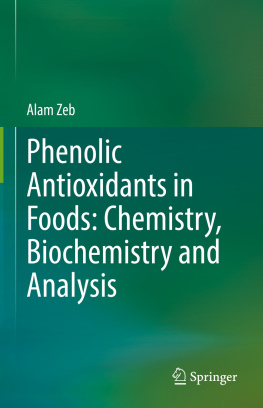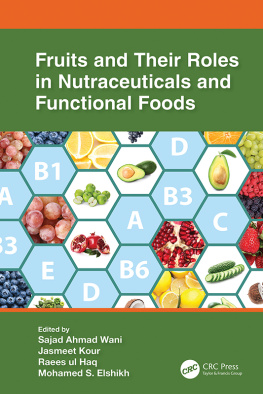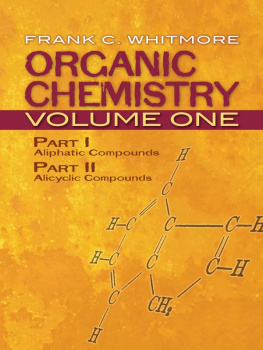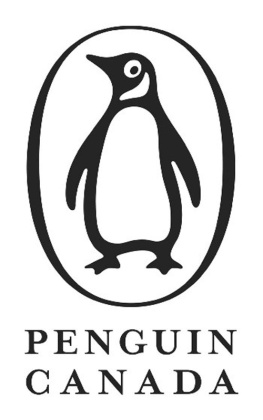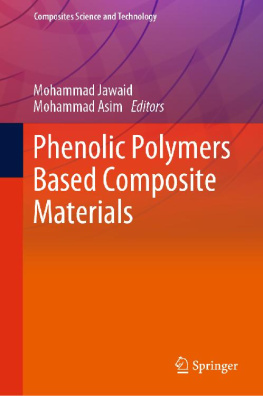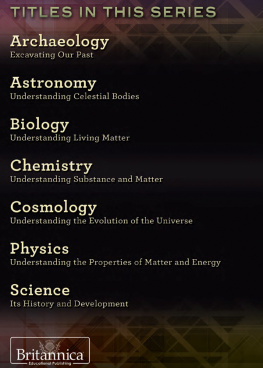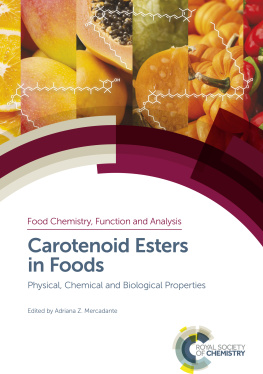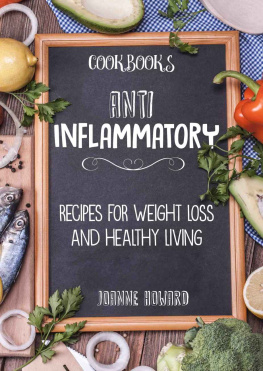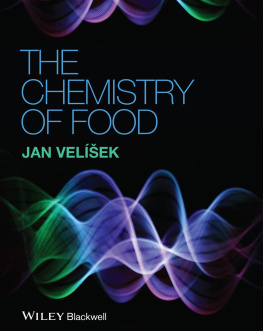Alam Zeb
Phenolic Antioxidants in Foods: Chemistry, Biochemistry and Analysis
1st ed. 2021

Logo of the publisher
Alam Zeb
Department of Biochemistry, University of Makaland, Chakdara, Pakistan
ISBN 978-3-030-74767-1 e-ISBN 978-3-030-74768-8
https://doi.org/10.1007/978-3-030-74768-8
Springer Nature Switzerland AG 2021
This work is subject to copyright. All rights are reserved by the Publisher, whether the whole or part of the material is concerned, specifically the rights of translation, reprinting, reuse of illustrations, recitation, broadcasting, reproduction on microfilms or in any other physical way, and transmission or information storage and retrieval, electronic adaptation, computer software, or by similar or dissimilar methodology now known or hereafter developed.
The use of general descriptive names, registered names, trademarks, service marks, etc. in this publication does not imply, even in the absence of a specific statement, that such names are exempt from the relevant protective laws and regulations and therefore free for general use.
The publisher, the authors and the editors are safe to assume that the advice and information in this book are believed to be true and accurate at the date of publication. Neither the publisher nor the authors or the editors give a warranty, expressed or implied, with respect to the material contained herein or for any errors or omissions that may have been made. The publisher remains neutral with regard to jurisdictional claims in published maps and institutional affiliations.
This Springer imprint is published by the registered company Springer Nature Switzerland AG
The registered company address is: Gewerbestrasse 11, 6330 Cham, Switzerland
To
My elder Brother (Alamgir Khan):
A friend, teacher, the most decent and humble person.
Your love, sincerity and support can never be repaid.
Preface
Plant foods consist of a large number of phenolic compounds, the majority of which are antioxidants. These phenolic compounds play a significant role in maintaining our health. This comprehensive book describes the chemistry, biochemistry and analysis of phenolic compounds present in a variety of foods. The book will serve as the latest source of knowledge in the field of food science and technology. Each chapter has specific learning outcomes, which are supported by study questions. The book covers all those important chemical, biochemical and analytical chemistry aspects of phenolic antioxidants in foods that are needed for a beginner to the expert in the field. This is a textbook based on the up-to-date scientific knowledge. This book was therefore aimed to cover them in three main sections. Part I covers the chemistry of phenolic antioxidants. This section consists of ten chapters covering the basic concept of antioxidants, their chemistry and chemical composition in foods. Chapters discuss the chemical composition of phenolic compounds in different types of foods. This section is highly significant and is very helpful for the beginners in food science or interested readers and will equip them with the basic concept of phenolic antioxidants in foods.
Part II covers the biochemical aspects of phenolic antioxidants and consists of four chapters. This section covers the biosynthetic pathways of phenolic antioxidants in foods and biological effects of phenolic antioxidants in foods. The molecular mechanism of antioxidant effects in the biological system has been presented. The section has clarified our understanding of the fundamental biochemical reactions taking place in foods and after digestion and absorption.
Part III covers the analytical chemistry for the analysis of phenolic antioxidants in foods. This section consists of three chapters, which cover the basic analytical procedures and methods for analysis. Chapters cover chromatographic and spectroscopic analyses of phenolic antioxidants in foods. This section is significant for food chemist and food manufacturers to evaluate the nature and chemistry of phenolic antioxidants in foods.
The book is organised in such a manner as to provide a smooth flow of scientific knowledge from chemistry, biochemistry to analysis, while each chapter holds its objectivity from each other. The book would also serve as the latest reference resource for food scientists, technologists, food chemists, biochemists, nutritionists and health professionals in academia, scientific labs and industries. The book provides fundamental and applied information to benefit those with different backgrounds in science. It will serve as a textbook for undergraduate, graduate and postgraduate students in the relevant disciplines.
Alam Zeb
Chakdara, Pakistan
Acknowledgements
This work would not have been possible without the help of some important people. The chemical structures were drawn based on the IUPAC names obtained from PubChem website of National Library of Medicine, US, which is highly acknowledged. I am also thankful to Huaxin Song, Zhejiang Key Laboratory for Agro-Food Processing, Zhejiang University, China for providing rough data for Figure 3.2 and 4.2, which are redrawn with permission from publisher. I am grateful to my family, my brothers (Alamgir Khan and Raham Zeb) and their loving children especially Muhammad Umair Khan and Uzair Ahmad Khan with whom I always enjoyed time in hometown. I am also grateful to my wife, sons (Umar Alam Khan, Hamzah Alam Khan) and daughter (Haya Bibi) for giving me tremendous support at home, while I was writing the manuscript.
Alam Zeb, PhD
Contents
Part I Chemistry of Phenolic Antioxidants
Part II Biochemistry of Phenolic Antioxidants
Part III Analysis of Phenolic Antioxidants
About the Author
Alam Zeb
is a Professor of Biochemistry at the Department of Biochemistry, University of Malakand, Pakistan. He is serving for 18 years at the same university teaching chemistry and biochemistry courses to undergraduate, graduate and postgraduate students of biotechnology and biochemistry. Dr. Zeb has received his PhD with distinction from the Institute of Biochemistry, Technical University of Graz, Austria, in 2010 funded by a scholarship from the Higher Education Commission (HEC) of Pakistan. During his studies at the Technical University of Graz, he also teaches practical food chemistry courses to postgraduate students. Dr. Zeb published more than 100 research articles regarding the subject in various international peer-reviewed journals. Dr. Zeb had authored two books, the recent one is a textbook Food Frying: Chemistry, Biochemistry and Safety published by John Wiley and Sons, UK, in 2019. This book has been ranked 4th among the best top 10 books of all times in the field of chemistry and safety by Bookauthority.org. He had supervised several PhD and MPhil research students during his service at the University of Malakand. He is a member of the editorial board of several international journals including

